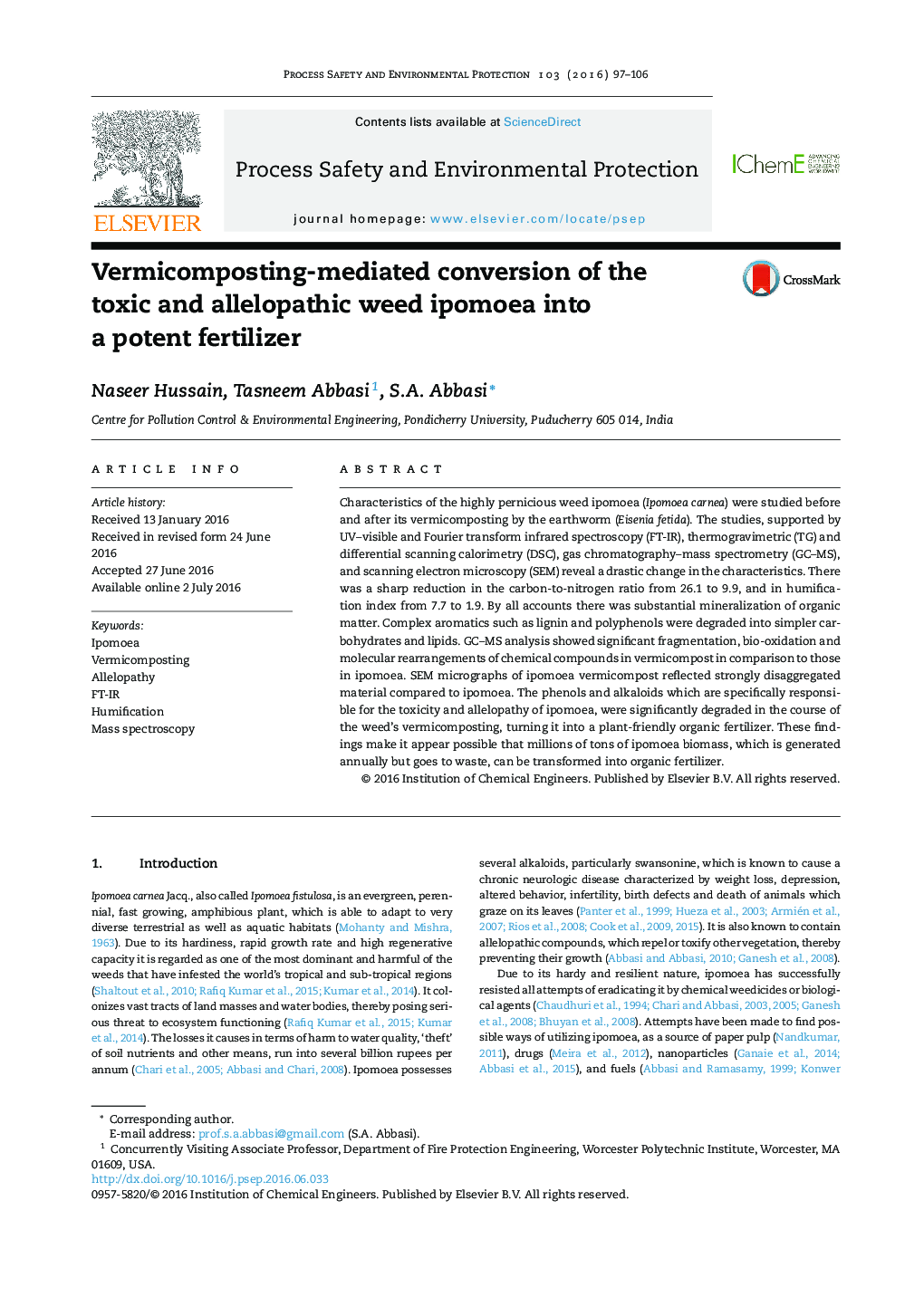| Article ID | Journal | Published Year | Pages | File Type |
|---|---|---|---|---|
| 4980901 | Process Safety and Environmental Protection | 2016 | 10 Pages |
Abstract
Characteristics of the highly pernicious weed ipomoea (Ipomoea carnea) were studied before and after its vermicomposting by the earthworm (Eisenia fetida). The studies, supported by UV-visible and Fourier transform infrared spectroscopy (FT-IR), thermogravimetric (TG) and differential scanning calorimetry (DSC), gas chromatography-mass spectrometry (GC-MS), and scanning electron microscopy (SEM) reveal a drastic change in the characteristics. There was a sharp reduction in the carbon-to-nitrogen ratio from 26.1 to 9.9, and in humification index from 7.7 to 1.9. By all accounts there was substantial mineralization of organic matter. Complex aromatics such as lignin and polyphenols were degraded into simpler carbohydrates and lipids. GC-MS analysis showed significant fragmentation, bio-oxidation and molecular rearrangements of chemical compounds in vermicompost in comparison to those in ipomoea. SEM micrographs of ipomoea vermicompost reflected strongly disaggregated material compared to ipomoea. The phenols and alkaloids which are specifically responsible for the toxicity and allelopathy of ipomoea, were significantly degraded in the course of the weed's vermicomposting, turning it into a plant-friendly organic fertilizer. These findings make it appear possible that millions of tons of ipomoea biomass, which is generated annually but goes to waste, can be transformed into organic fertilizer.
Related Topics
Physical Sciences and Engineering
Chemical Engineering
Chemical Health and Safety
Authors
Naseer Hussain, Tasneem Abbasi, S.A. Abbasi,
